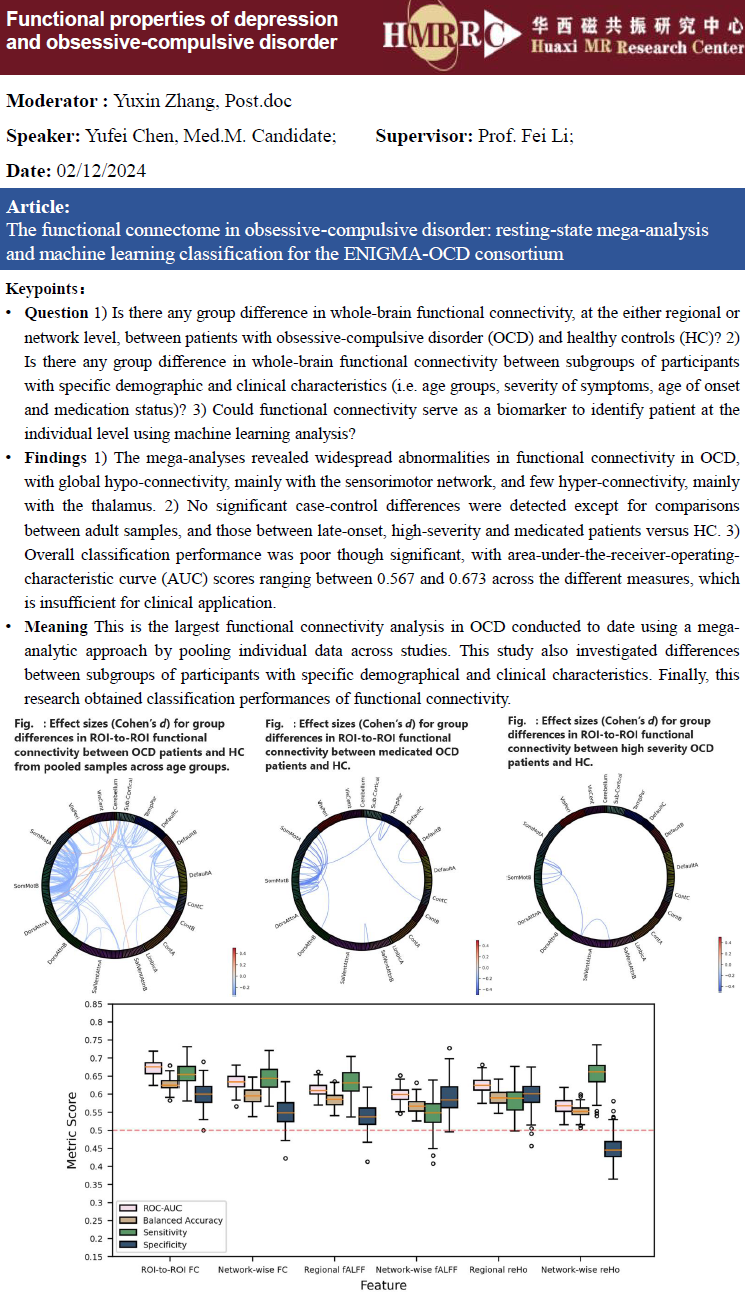
Functional properties of depression and obsessive-compulsive disorder.
Topic: Functional properties of depression and obsessive-compulsive disorder
Moderator: Yuxin Zhang, Post.doc
Date: 2/12/2024, 14:00
Location: The lab of HMRRC (10011, the 8th Teaching Building)
Speaker 1: Lisha Zhang , Ph.D. Candidate
Title: Shared and Unique Changes in Brain Connectivity Among Depressed Patients After Remission With Pharmacotherapy Versus Psychotherapy

Keypoints:
Speaker 2: Yufei Chen, M.M. Candidate
Title: The functional connectome in obsessive-compulsive disorder: resting-state mega-analysis and machine learning classification for the ENIGMA-OCD consortium

Keypoints:
Question: 1) Is there any group difference in whole-brain functional connectivity, at the either regional or network level, between patients with obsessive-compulsive disorder (OCD) and healthy controls (HC)? 2) Is there any group difference in whole-brain functional connectivity between subgroups of participants with specific demographic and clinical characteristics (i.e. age groups, severity of symptoms, age of onset and medication status)? 3) Could functional connectivity serve as a biomarker to identify patient at the individual level using machine learning analysis?
Findings: 1) The mega-analyses revealed widespread abnormalities in functional connectivity in OCD, with global hypo-connectivity, mainly with the sensorimotor network, and few hyper-connectivity, mainly with the thalamus. 2) No significant case-control differences were detected except for comparisons between adult samples, and those between late-onset, high-severity and medicated patients versus HC. 3) Overall classification performance was poor though significant, with area-under-the-receiver-operating-characteristic curve (AUC) scores ranging between 0.567 and 0.673 across the different measures, which is insufficient for clinical application.
Meaning: This is the largest functional connectivity analysis in OCD conducted to date using a mega-analytic approach by pooling individual data across studies. This study also investigated differences between subgroups of participants with specific demographical and clinical characteristics. Finally, this research obtained classification performances of functional connectivity.